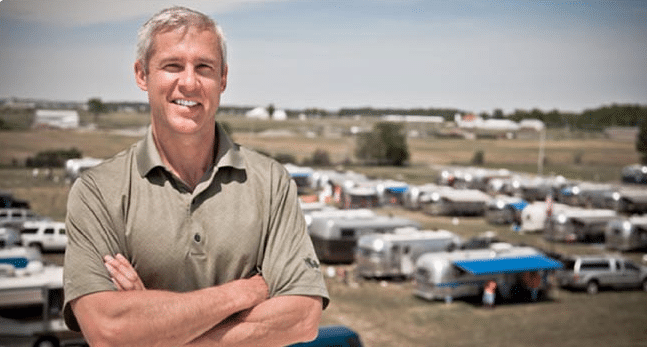Trailer Life’s Tom Kaiser recently interviewed Airstream CEO Bob Wheeler about the opening of the company’s fifth stand-alone dealership (click HERE for that story), Airstream L.A., in San Gabriel, Calif. We used the opportunity to ask Wheeler about his company’s expansion plans, new technologies hitting the RV market and the future of the industry in the United States and abroad.
Trailer Life: What’s your current focus this year and into next?
Bob Wheeler: We need to grow our distribution in North America, not to over-dealer. It’s a premium product [and] we certainly can’t put an Airstream dealership on every corner, but there are open territories for us where we need to have a presence … One of the other big focuses for us is the international market. We’ve sold into the UK and Continental Europe since 2005. Now we’re very close to signing two dealer distributors in China, one in South Korea, one in Australia and we’ve had inquiries from Thailand, Brazil and South Africa — things we don’t have the bandwidth to follow up on, but I fully expect in the next 12 months we’ll be in business in China, South Korea and Australia.
TL: Looking at your entire product line, are there any segments you’re looking to focus on?
BW: The surprising growth story at Airstream has really been our Class B motorhomes. The Airstream Interstate on the Mercedes-Benz Sprinter chassis. In 2011, it was the number one Class B motorhome in the United States. We’re very proud of that and we see a real opportunity to continue that growth.
TL: Do you ever get out in the product?
BW: The weekend before last, I put 600 miles on [an Airstream Class B]. It’s a great experience. I went up to Cleveland and back from Airstream, which is about 4 hours each way.
TL: You’ve said lightweight RVs are the next big thing. Is that just because of fuel prices?
BW: I think that’s the driver. Higher fuel prices force smaller, more fuel-efficient cars, which forces lighter RVs. It’s a pretty straight line. Those things are coming here in the U.S. It’s taken a little longer than some of us anticipated — you can still certainly buy full-size tow vehicles here — but the trends are inevitably going to be for lightweight tow vehicles with less towing capacity. This industry has got to respond to that, and they have been. It’s just been a little slower than we anticipated.
TL: Does that mean maintaining the current size of RVs using lighter materials, downsizing our RVs or a combination?
BW: That’s a pretty good analysis of the two things that have to happen. You’ll see a combination of those things. One thing this industry is famous for is offering a huge variety and range of options for folks, so you’ll be able to buy smaller units made with traditional materials, smaller units built with lightweight materials; you name the combination, somebody will make it.
TL: How will this shift change the industry?
BW: The inflection point is going to be, and this is what’s happened in Europe, at a certain point putting those lightweight materials in — they’re more expensive — at a certain point you have to start paying more for lightweight, rather than less. You can only take out so much content. That’s only going to make you so light, and people are only going to be willing to settle for so much de-contenting, so at a certain point lightweight, more expensive materials are going to have to go in and the prices are going to go up. That’s exactly what happened in Europe. Their trailers, pound for pound and length for length, are fairly more expensive than anything in the U.S., and it’s those materials I’m talking about.
TL: How much more expensive are European RVs?
BW: About 20 percent, depending on product and finish, maybe 25. It’s not insignificant.
TL: How do you rate the current health of the RV market?
BW: The product has never been better. The sky is not falling. There are great fuel-efficient vehicles out there now. The hybrid technology that’s coming out from almost every car company is remarkable and, for those people who need a full-size pickup and SUV, they’re still available. I don’t see it as a bad trend. This industry has proven very resilient and able to respond to whatever trends or challenges they need to.
TL: What makes the RV industry a good long-term bet?
BW: We have tremendous national parks and state parks, tremendous recreational opportunities that you can only maximize your enjoyment of in an RV. That trend will support us. The overriding trend, the Baby Boomer generation is the biggest driver. WE know there’s 15 years of growth ahead of us as the Boomers head into retirement. That’s what the analysts talk about in terms of why the RV industry is a good bet. Those folks are just starting to kick in to retirement now, so we think the RV industry is well positioned for growth for a long time … even if fuel prices rise.



